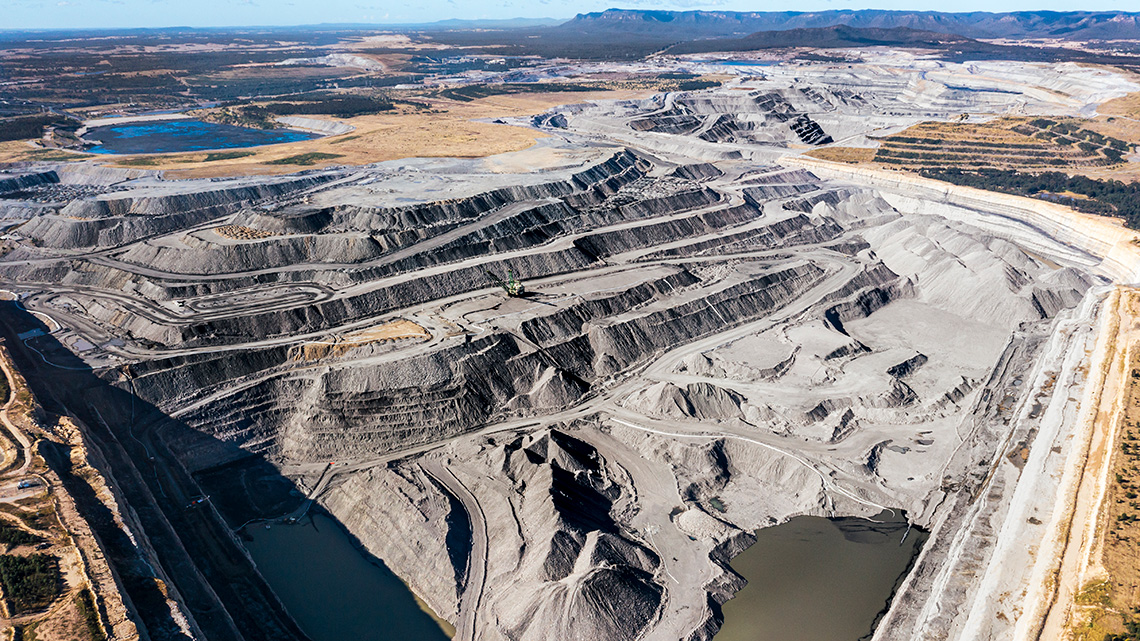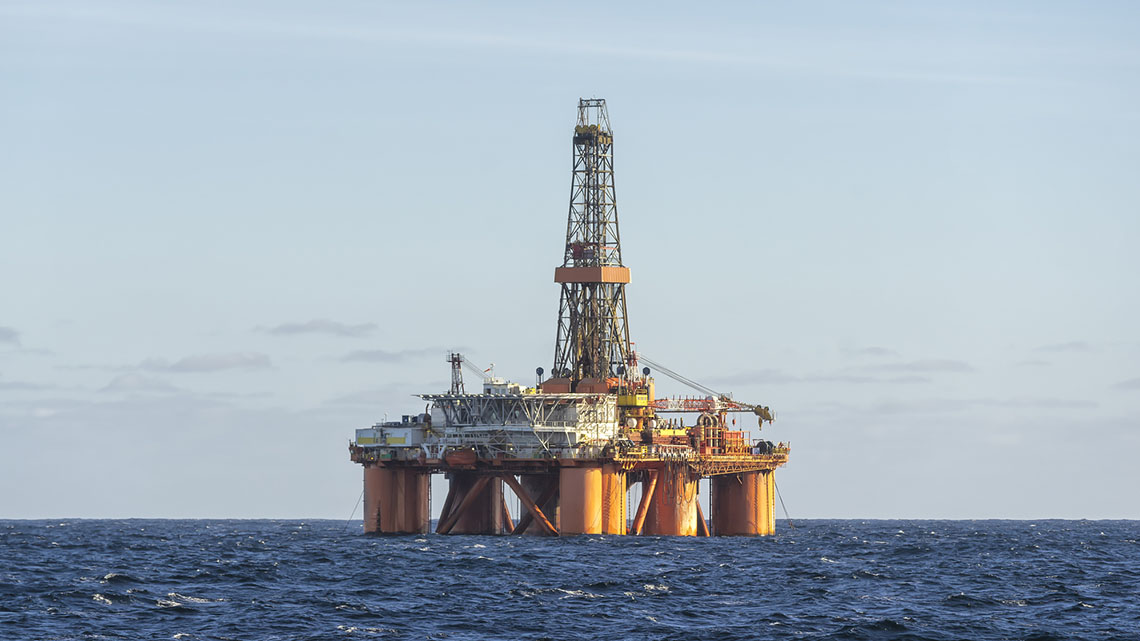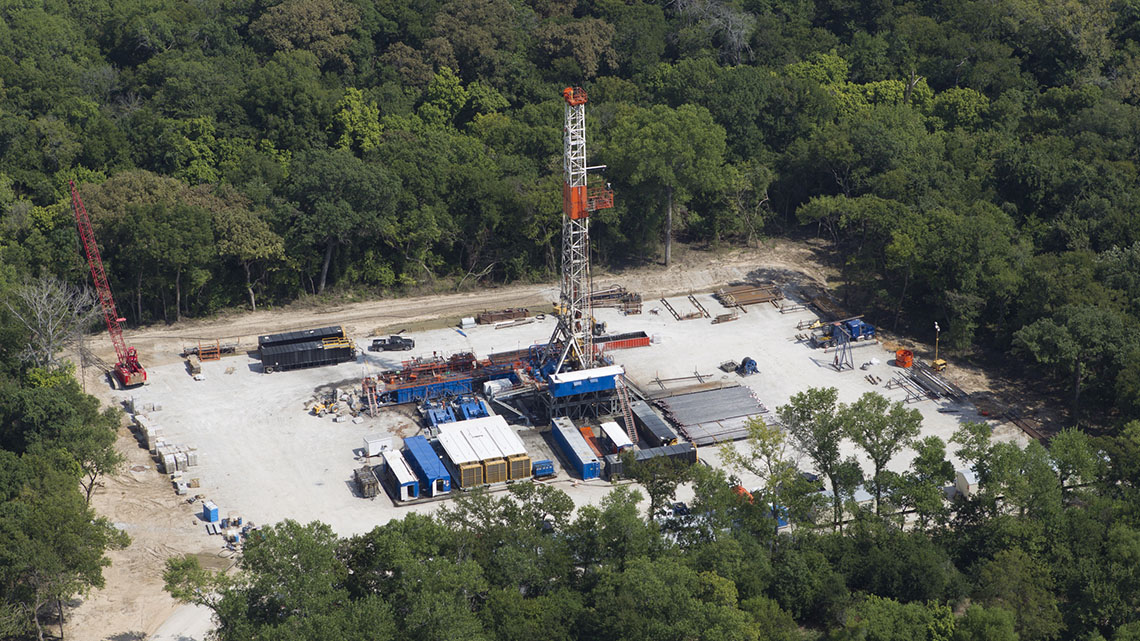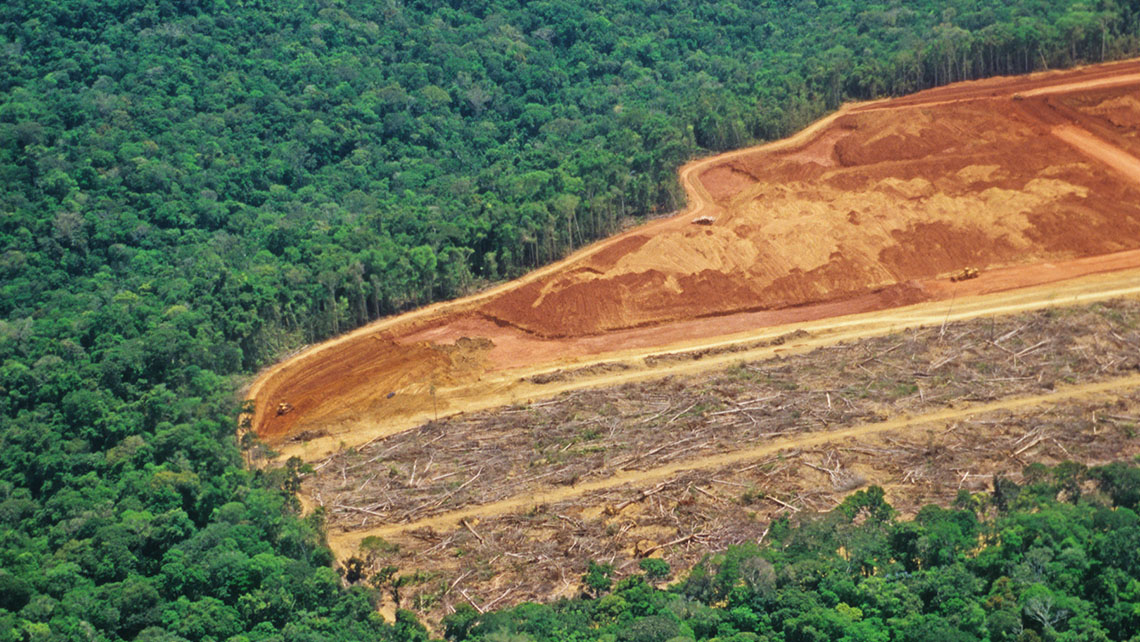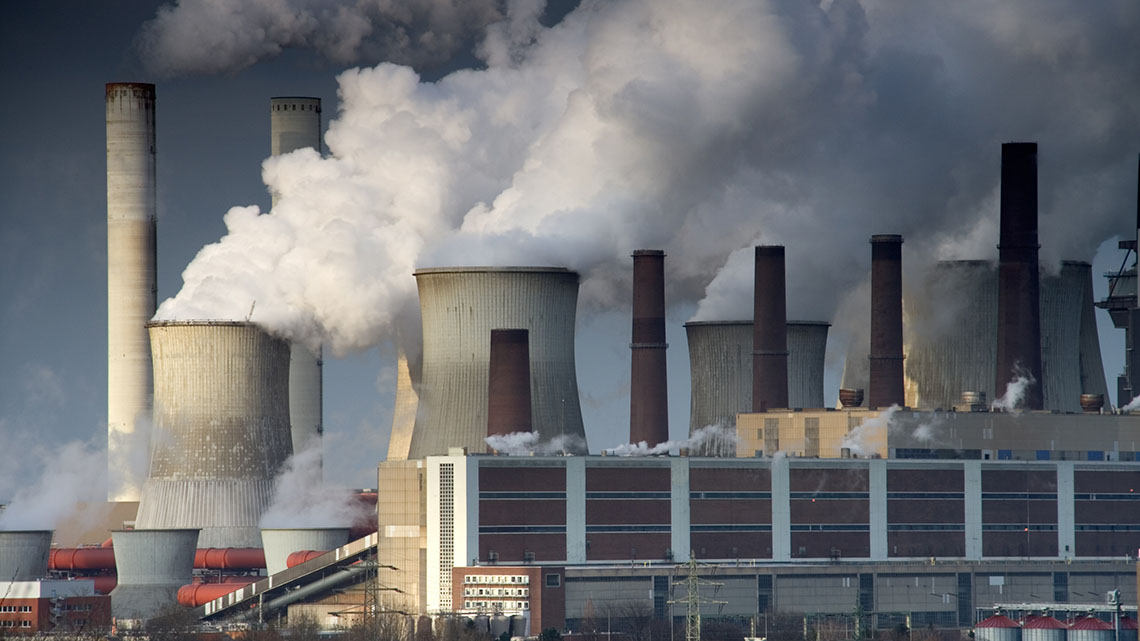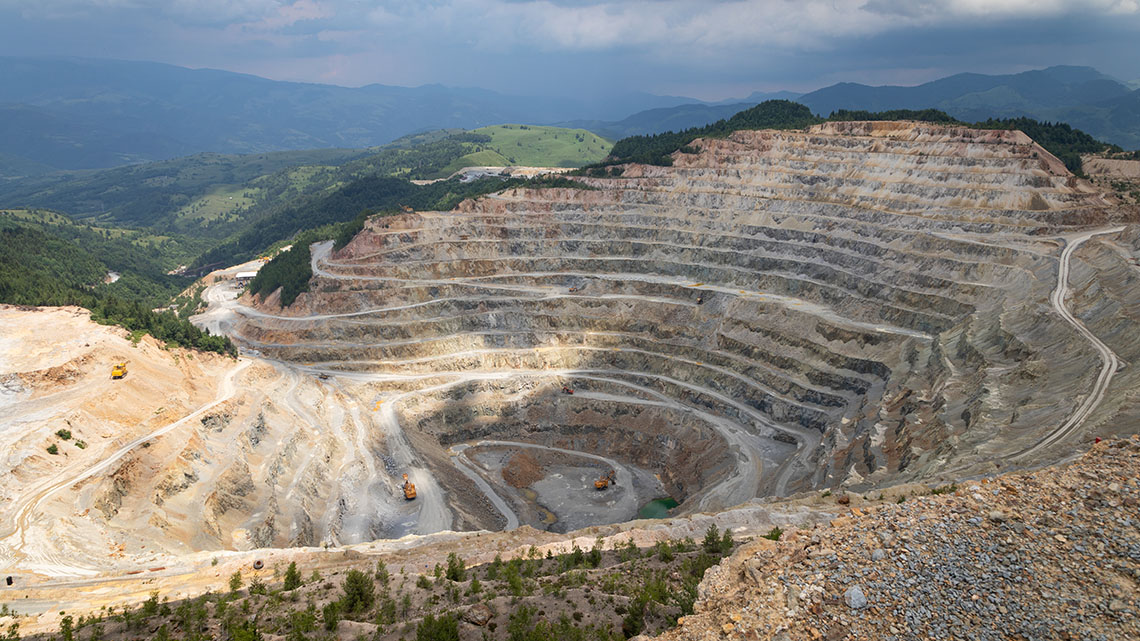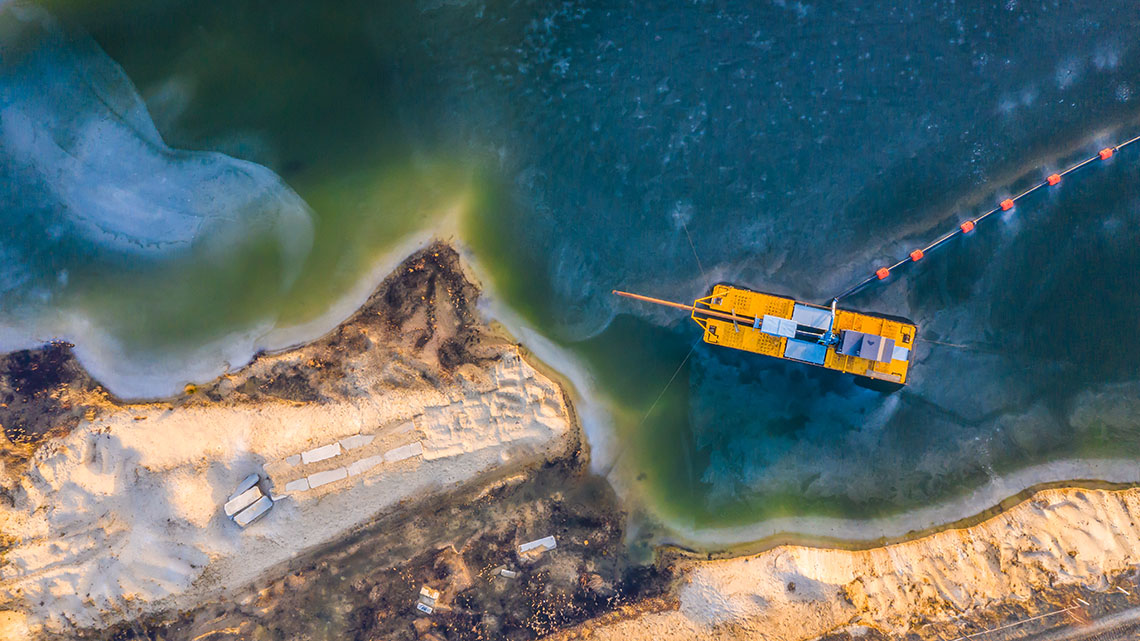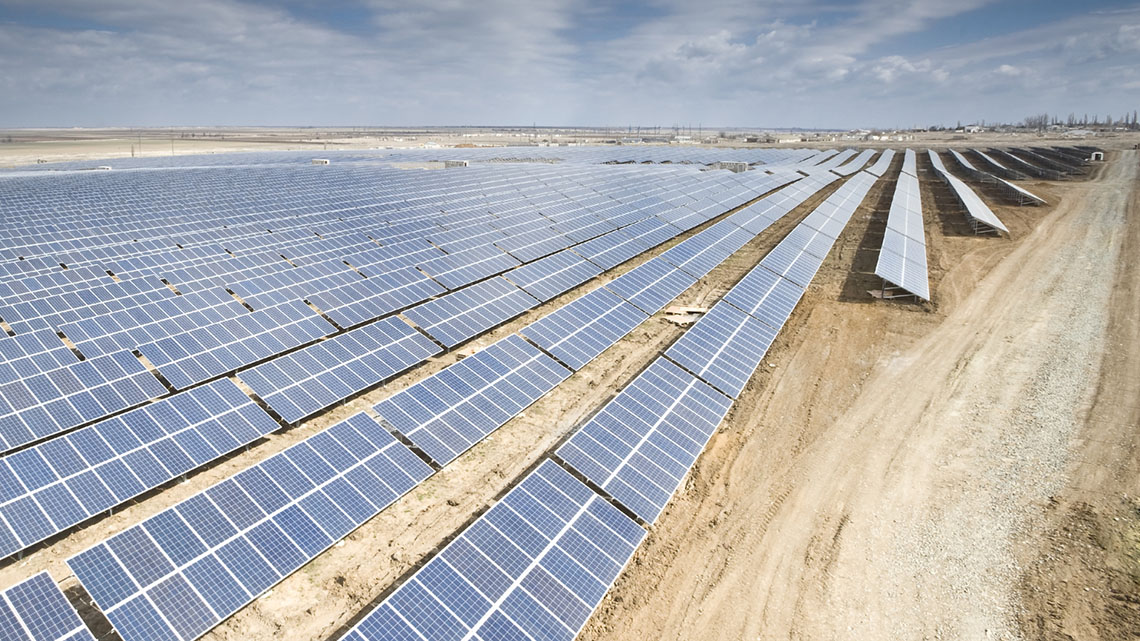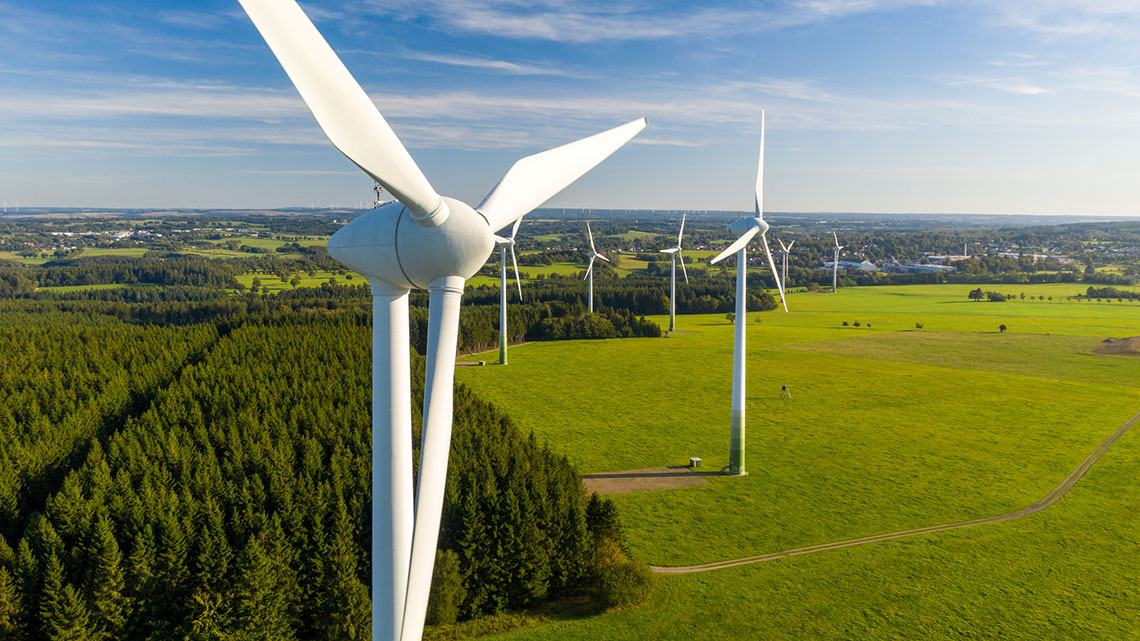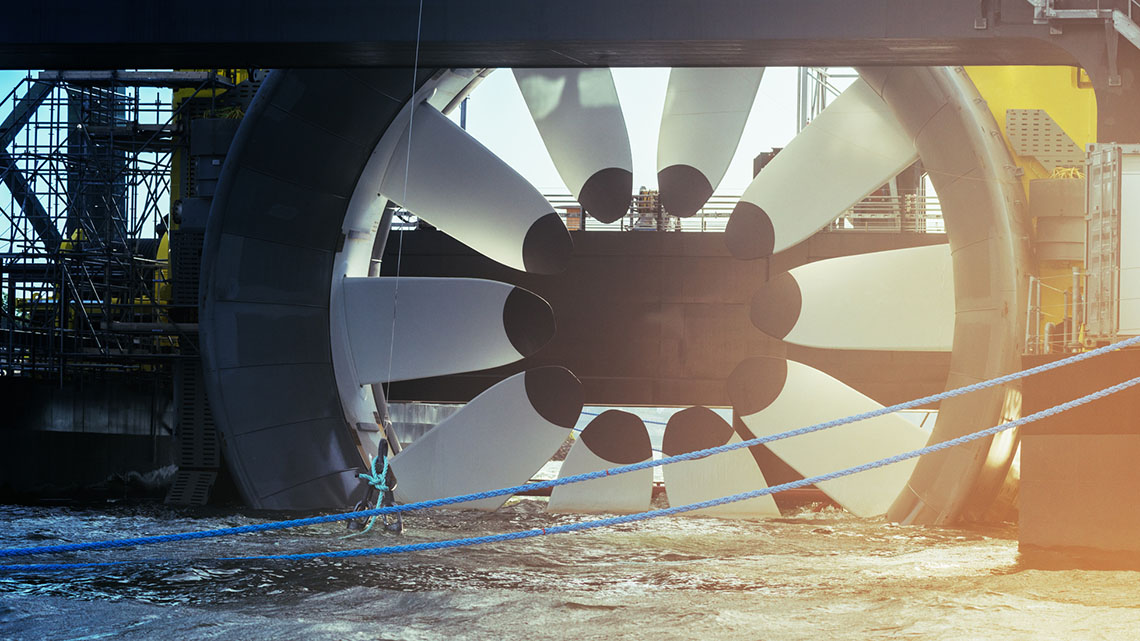Minds On
Methods of extraction
Some resources, like trees or water, are easily accessed on the Earth’s surface. Other resources, like minerals or natural gas, are often found deep in the Earth’s crust and must be extracted. Extraction means to remove something using force or effort.
Explore some of the world’s collection and extraction methods below and consider the potential risks to the climate and natural environment.
Student Success
Think-Pair-Share
Take a moment to reflect on the following questions. If possible, share your thoughts and ideas with others.
- What are some of the risks of one of the previous extraction methods to the natural environment?
- What are some ways to ensure the safety of the environment during extraction in general?
Note to teachers: See your teacher guide for collaboration tools, ideas and suggestions.
Throughout this learning activity, you can record your ideas digitally, orally, or in print.
Action
Extraction of various natural resources

Mining for minerals has been a practice for thousands of years by peoples around the world, from the Ancient Egyptians to the Incas of South America. In many cultures, gold and silver were, and continue to be, widely valued.
Whether functioning as a form of currency or used to produce products for everyday life, mining has played a crucial role in many societies. In fact, many of the items we use in our daily lives depends on natural resources.
Press Resources to explore examples of how minerals are used in everyday life.
For example, coal is used in many countries for cooking, electricity, steel production, and heating homes. Oil and its byproducts are used to fuel cars, airplanes, and heat buildings. It is also used in plastics, electronics, furniture, and in agriculture.

Types of mining
There are many types of mining around the world. Diverse mining techniques are needed depending on the resource being mined, the location of the resource in the ground, and the location of the mine itself. Coal, diamonds, and iron are common mined resources. Coltan is one of the most significant mined minerals. A key component of coltan, tantalum, is used to manufacture capacitors which are used for computers, mobile phones, cameras, and automotive electronics.
Press the following two titles of mining technique to explore the diverse types of mining and their consequences.
Underground mining involves drilling into the rock and bringing minerals such as iron, zinc, copper, tin, and gold to the surface by way of a horizontal or vertical tunnel. Underground mining is an ancient profession but is commonly known as dirty and dangerous work.
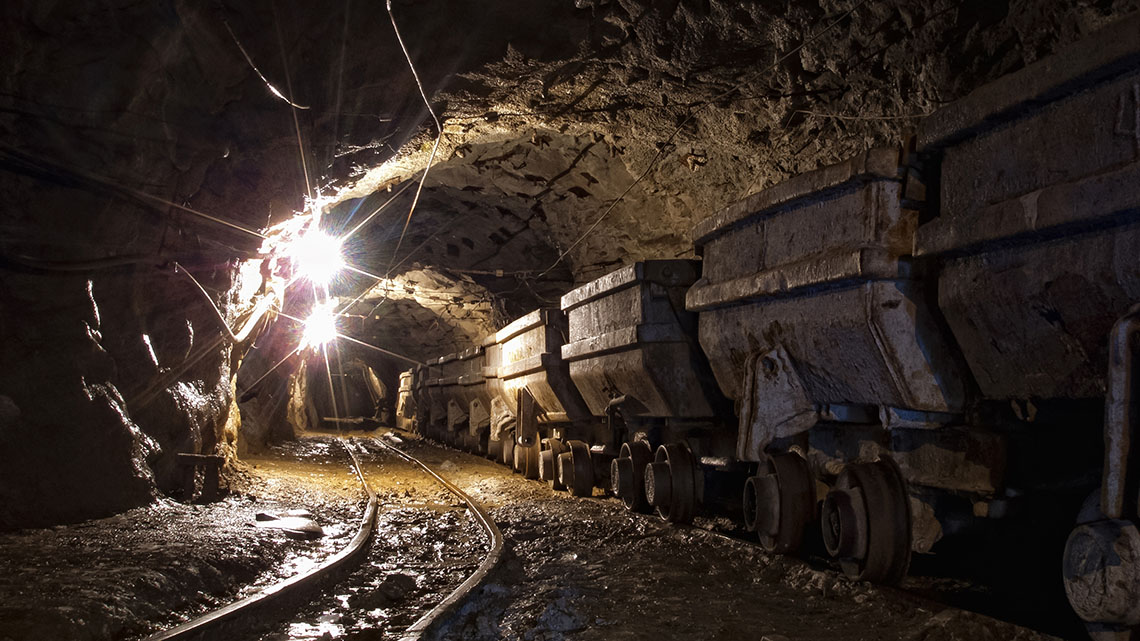
Open pit or surface mining involves digging with machinery to create a pit in a selected area. The pit gradually expands as more minerals are extracted. Iron ore is commonly extracted using an open pit.
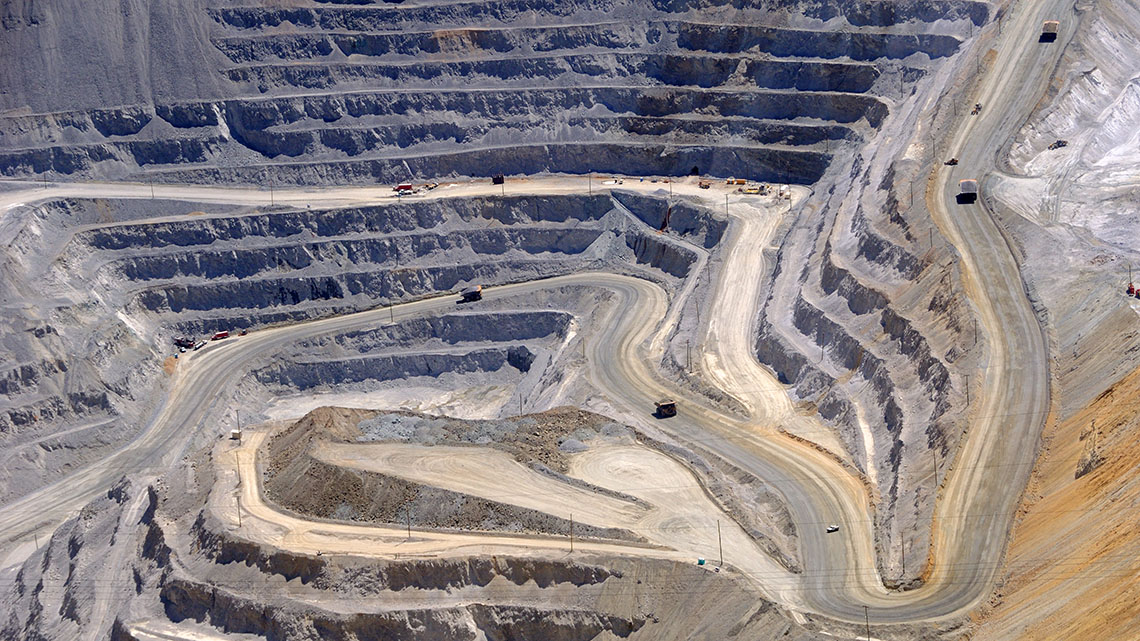
Types of coal mining
One of the most popular forms of mining has been for coal. Formed from animal and plant remains over millions of years, it is one of the most common forms of fossil fuels that has been used for heating homes and supplying energy to a variety of industries.
The three main ways of mining coal include: room-and-pillar mining, longwall mining, and surface mining.
Press each type of coal mining to explore the different techniques for mining coal.
Mining and the environment
The impact of mining on the natural environment can lead to the erosion of soil, contamination of the earth and water, and the alteration of soil itself. There is the risk of the potential contamination of wetlands, streams, and rivers in the area.
There are many concerns with the lasting effects of surface mining as it can cause damage to the ecology of the land with changes to the soil, vegetation and bedrock, which can in in turn affect groundwater levels, , and surface hydrology.
Aside from the mining process, the way minerals and organic materials such as coal are used produces environmental hazards. For example, when burned, coal reacts with oxygen in the air to produce carbon dioxide. Carbon dioxide is a heat-trapping gas that blankets the atmosphere and warms the Earth beyond its regular limits, resulting in global warming and climate change.
Specific issues caused by mining
The environmental consequences of mining come from the mining itself and from the use of mined resourced. Explore the following selection of environmental problems caused by mining.
As you discover more information on the impact of mining, return to your responses in the Minds On section and add to your answers.
Social impacts of mining
Beyond environmental risks, there are social costs of mining in many regions of the world. Following the explosion in usage of computers and mobile devices around the world, rare minerals also saw a huge increase in demand. Many of these minerals come from poor and exploited countries with few rights for workers and little power to control mining companies. It is relatively simple for mining companies from rich and powerful countries like Canada to gain access to these resources, either legally or illegally. Most of us own or use devices containing materials illegally mined by child labourers.
In particular, the extraction of minerals such as coltan in the Democratic Republic of the Congo (DRC) is known for its use of child labour. Children can get into the small tunnels in the mines and move about more easily than most adults. It is also cheaper for mine owners; child labourers make about $2 per day. There is a high risk of death due to unsafe working conditions, including the collapse of tunnels and water-borne diseases.
There is also the risk of conflict between international, national, and local powers who aim to control of the mines. In the Democratic Republic of the Congo, many groups have fought for control of the mines against government militaries, international mining companies, and private military forces, who serve as security at mines.

Mining consequences questions
Now that we have considered the environmental and social costs of mining, complete the following multiple-choice activity.
Petroleum (oil)
Originally discovered in China as early as 600 BCE, it was not until the mid-1800s discovery of crude oil (also known as petroleum) in Pennsylvania and later in Texas in 1901, that the impact of oil transformed the modern world into an oil economy. Crude oil is used to make gasoline (called petrol in much of the English-speaking world) and other vehicle fuels.
The discovery and increase in use of oil as a fuel changed industry and the world into an oil economy. An oil economy refers to the dependence on oil to meet energy needs. Following the discovery of oil in the United States, oil eventually came to provide most energy needs throughout the world.
Petroleum is a fossil fuel that was formed from the remains of ancient organisms including plants, , and algae. Oil platforms extract and process oil and natural gas from shale rock formations below the seabed. It has a drill, cranes, and living quarters.

Risks of oil extraction
Oil platforms, as well as vessels and pipelines delivering crude oil, have been responsible for many oil spills. Oil spills have led to ecological disasters for marine life and nearby communities in the region. Perhaps the largest and most famous oil disaster is the Deepwater Horizon incident which killed nearly a dozen workers on the platform, killed and injured countless animals and ocean life, and devastated coastal communities in the Gulf of Mexico.
In Canada, the threat posed by pipelines to First Nations’ ancestral lands has been a point of contention for these Nations with the Canadian government in British Columbia. First Nations peoples are not only concerned with the potential for ecological disaster should a pipeline breach, but also the social and spiritual cost of constructing a pipeline on ancestral lands.
The impact of burning fossil fuels is directly connected with rising global temperatures and climate change. More unpredictable and extreme weather patterns have developed in the 2000s largely due to this warming. The Earth’s average temperature has risen by over one degree Celsius between 1880 until the present.
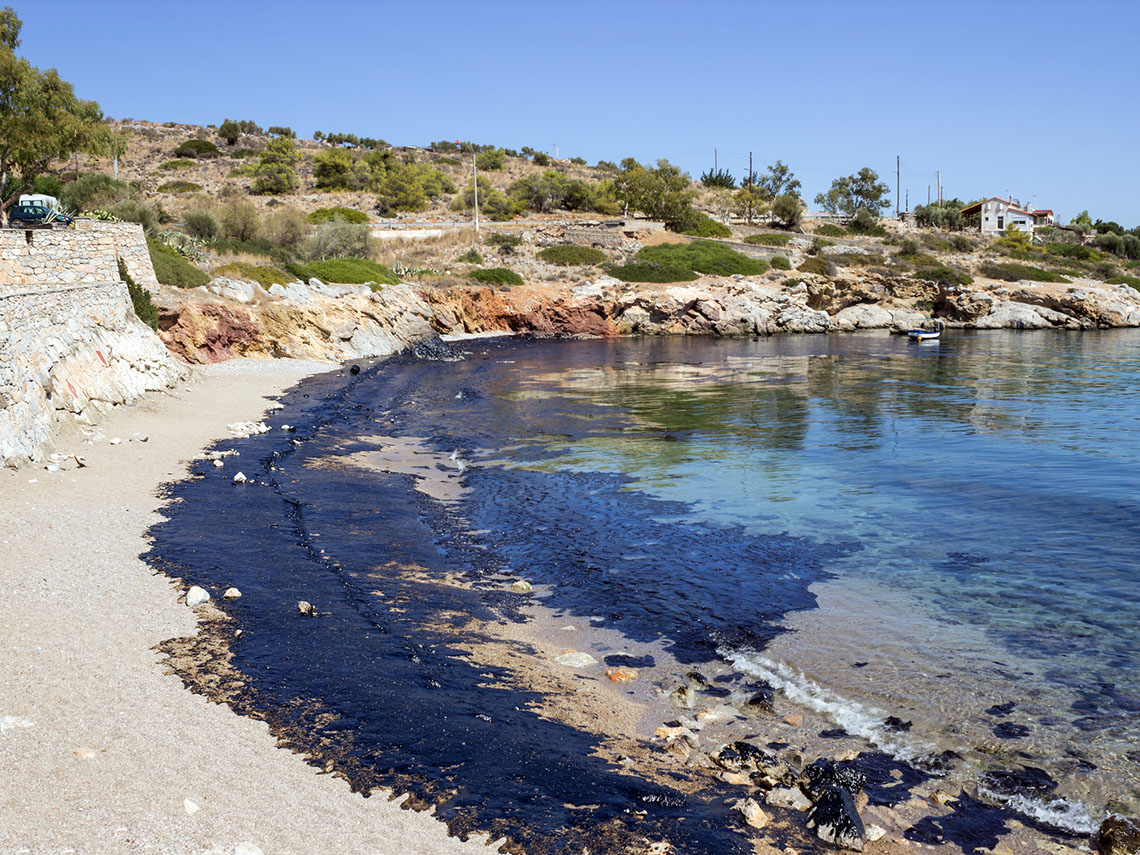
Natural gas fracking
Fracking is the method of shooting high-pressure water, sand and chemicals into the ground in order to access and extract oil and natural gas. It is increasingly practiced throughout the world, including Canada. One of the greatest concerns is the seismic activity that has been detected in the form of tremors. The risk of triggering tremors or even earthquakes have the potential for the destruction of buildings in the wider region. Other risks include the contamination of groundwater and spills of crude oil.
 Description
Description
Extraction questions
Now that we have considered the methods of oil extraction, complete this following true or false activity about this learning.
Reflection question
What do you feel is the biggest concern about extracting oil and gas? Explain your reasoning.
Deforestation
Forests serve as a home for countless wildlife species. As a result of the natural photosynthesis processes of trees, forests consume carbon dioxide and release oxygen into the atmosphere, helping to balance the greenhouse effect of carbon dioxide. However, timber is used to make many of the products consumed by humans including furniture and in the construction of buildings. The impact of deforestation to meet the timber demand in the world has a great impact on the environment and socially. Deforestation also occurs in the process of mining, fracking, and clear-cutting for agriculture.
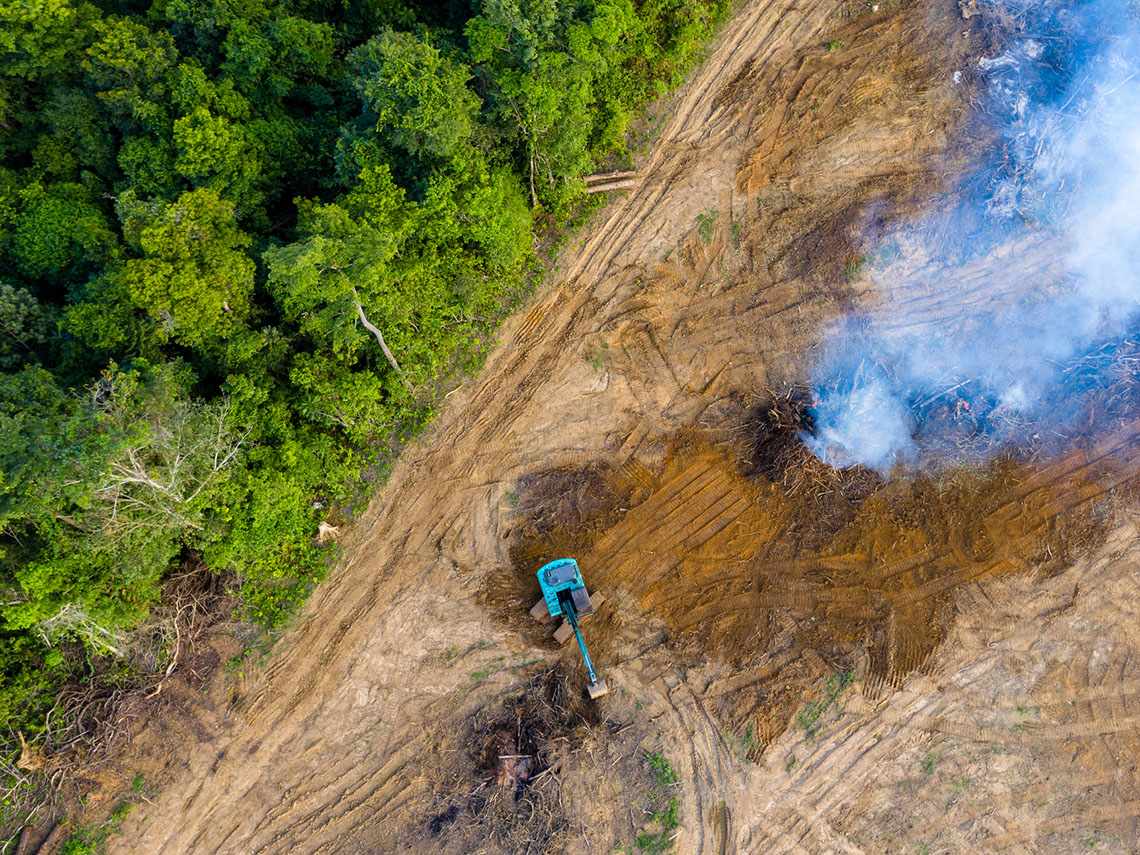
Environmental impact of deforestation
The Amazon Rainforest in Brazil has been massively affected by the environmental impact caused by deforestation. Deforestation causes the forest to dry out, harms the soil and can lead to drought and wildfires. The destruction of forests destroys the habitat, food sources, and homes for local wildlife species.
Social impact of deforestation
In the Amazon Rainforest, many Indigenous peoples have lost their land to deforestation as well as their livelihood, hunting, and food practices. Many have been displaced and forced to live in ever-shrinking sections of their traditional lands or have been forced to leave their lands and relocate to urban areas. Violence by logging companies and workers against Indigenous peoples and environmental activists is common and rarely punished.
Reflection questions
- What are the potential long-term effects of deforestation?
- How does deforestation affect Indigenous peoples living in the region?
Control of resources
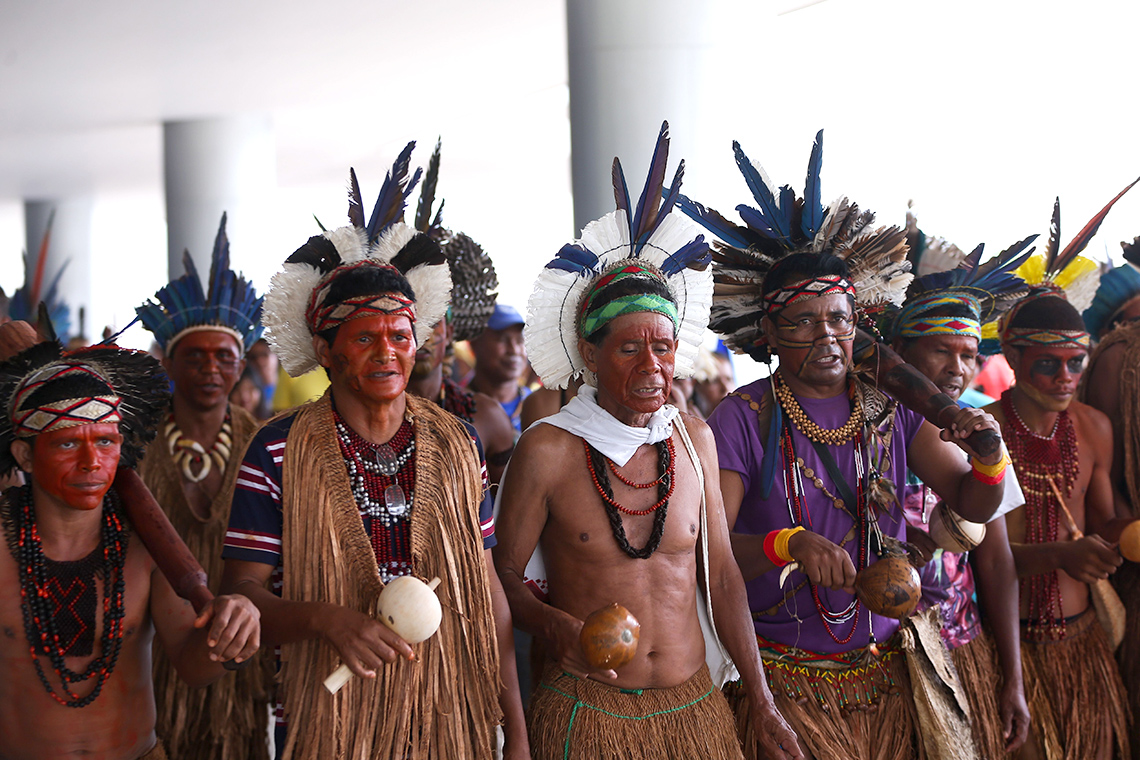
Indigenous populations often find themselves living in resource-rich regions. However, rather than benefitting economically, they are often marginalized by governments and industries and are forced to live in increasingly difficult circumstances often resulting in poverty and exploitation.
For example, despite Canada having the greatest number of freshwater lakes in the world (accounting for 7 percent of the world’s total fresh water), many First Nations in Canada are denied access to clean drinking water. The Government of Canada is responsible for providing the infrastructure necessary to access drinkable water on reserves but has failed to fulfil its obligations. Often the Government has opted to support corporate and mining industries’ access to water (usually to dump toxic waste like mercury from industrial processes) instead of supporting the needs of the First Nations communities. Similarly, many communities in the Amazon Rainforest have been displaced by governments and industries and have been denied the economic benefits of their resource rich lands.
Reflection question
What do you think are some of the reasons why some First Nations peoples cannot access clean drinking water despite Canada being the largest source of fresh water in the world?
Alternatives and solutions to extraction issues
Despite the challenges and impacts of natural resource extraction, some people are finding alternatives or solutions. For example, reforestation or the planting of trees is meant to replenish forests, which will benefit the climate, the future of some Indigenous populations, and wildlife.
Others are seeking alternative sources of electricity such as solar power, wind power and tidal, whose environmental and social footprint may be much smaller when compared with many traditional techniques of extraction.
Explore the following non-oil/gas energy sources.
Reducing impact of existing techniques
Even if mining continues to be a popular form of resource extraction, there are four things that can be done to limit the environmental impact.
Press the following four tabs to explore how existing extraction techniques can be improved.
Consolidation
Extraction methods review
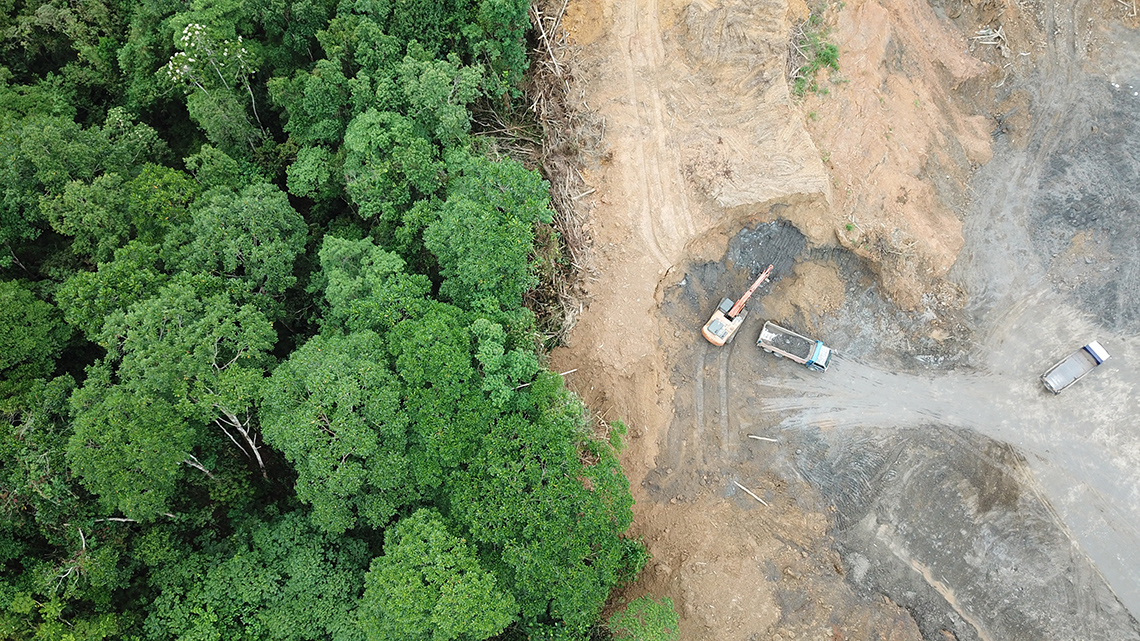
Let’s consider the extraction methods used in obtaining resources and the impact made by each one on the environment and communities.
Complete the following activity by listing some of the common environmental issues caused by each method of extraction. You can list the consequences in point-form if you wish.
Press the ‘Activity’ button to access Environmental Consequences Chart.
Once you have listed the consequences, rank them in order from the least impactful to most harmful to the environment and communities, and explain your choices. Using a method of your choice, complete the following chart.
Press the ‘Activity’ button to access Extraction Method Ranking Chart.
If you had to choose an audience to share your rankings with, who would you choose? Why?
How would you communicate your ranking to this audience effectively? Explain your choice.
Reflection question
- What is problematic about the method of extraction you selected as the most sustainable?
- Can these issues be resolved or are alternative resources a better solution?
Answers these questions using a method of your choice.
Reflection
As you read the following descriptions, select the one that best describes your current understanding of the learning in this activity. Press the corresponding button once you have made your choice.
I feel...
Now, expand on your ideas by recording your thoughts using a voice recorder, speech-to-text, or writing tool.
When you review your notes on this learning activity later, reflect on whether you would select a different description based on your further review of the material in this learning activity.
Press ‘Discover More’ to extend your skills.
Discover MoreUsing a method of your choice, create a list of resources, their environmental, and social impact.
- Select one natural resource in a region of the world and research in greater depth to complete the chart.
- Brainstorm ways we could extract natural resources in ways that will benefit local communities and companies. For example, perhaps a percentage of the wealth generated from the extraction of a natural resource will go to the local community to fund housing and education.
- Finally, think of other resources that could replace fossil fuels as a source of energy such as the benefits of solar power.
Complete the Rethinking Resources Chart in your notebook or using the following fillable and printable document.
Press the ‘Activity’ button to access Rethinking Resources Chart.
